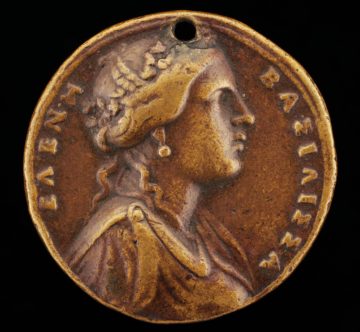Ruby Blondell in Lapham’s Quarterly:
 Like her patron goddess, Venus, Helen of Troy represents, in Goethe’s famous phrase, the “eternal feminine.” She pervades the broader discourse of beauty culture in the early twentieth century. A newspaper article from 1916 informs us that an artist named Ray van Buren studied “the beauty of Helen as delineated in the finest Greek friezes and sculptures,” before extolling the modern women who, in his view, have “the same classic, tantalizing, heart-storming beauty as the immortal Helen of Troy.” A 1926 tip for lustrous hair (involving egg whites and carbolic acid) is attributed to Helen’s “beauty recipe books.” Her name appears less often than Venus’ in early movie titles, but advertisements for beauty products often invoke the goddess and her protégée in the same breath. Sometimes they are even conflated, as if Helen had been the winner—not just a bribe—at the Judgment of Paris: “The Search for a New Helen of Troy Begins in France, [with] the Modern Judgment of Paris…to Determine Who Is Most Beautiful.”
Like her patron goddess, Venus, Helen of Troy represents, in Goethe’s famous phrase, the “eternal feminine.” She pervades the broader discourse of beauty culture in the early twentieth century. A newspaper article from 1916 informs us that an artist named Ray van Buren studied “the beauty of Helen as delineated in the finest Greek friezes and sculptures,” before extolling the modern women who, in his view, have “the same classic, tantalizing, heart-storming beauty as the immortal Helen of Troy.” A 1926 tip for lustrous hair (involving egg whites and carbolic acid) is attributed to Helen’s “beauty recipe books.” Her name appears less often than Venus’ in early movie titles, but advertisements for beauty products often invoke the goddess and her protégée in the same breath. Sometimes they are even conflated, as if Helen had been the winner—not just a bribe—at the Judgment of Paris: “The Search for a New Helen of Troy Begins in France, [with] the Modern Judgment of Paris…to Determine Who Is Most Beautiful.”
As icons of female beauty, both Helen and her patron goddess were vehicles for contemporary ambivalence about the cultural legitimacy of modern America. Many sources opine that in Hollywood Helen would be nothing in comparison with the abundance of American beauties.
More here.
